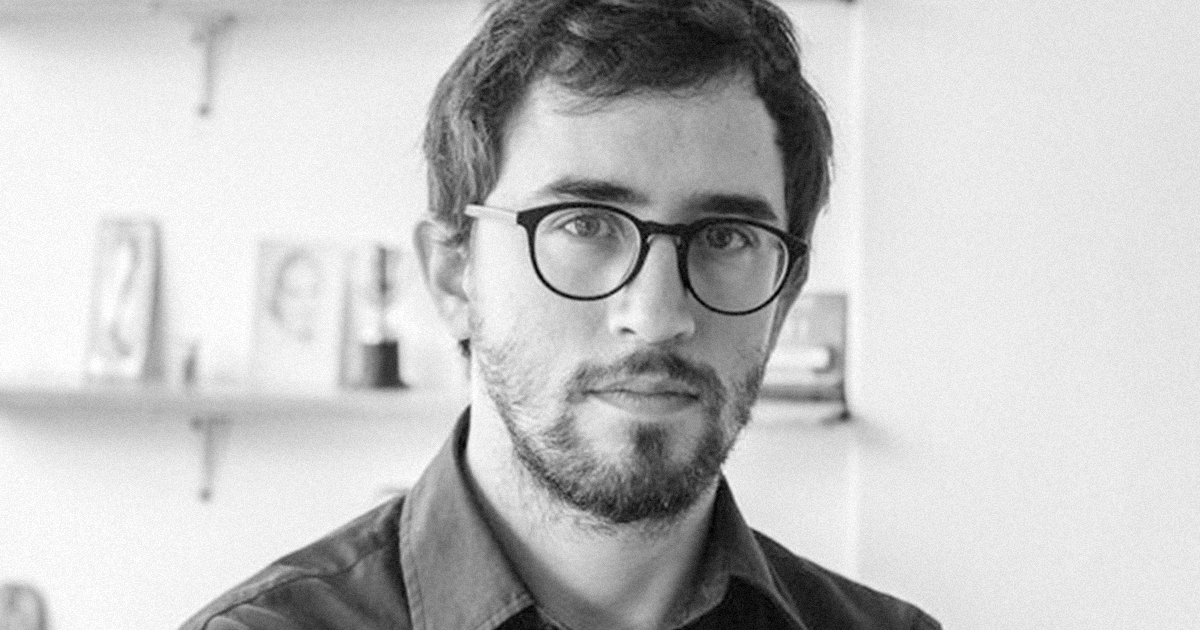“On November 8, 2021, the jury made up of Gonzalo Pontón Gijón, Marta Ramoneda (from the La Central bookstore), Marta Sanz, Juan Pablo Villalobos and the publisher Silvia Sesé awarded the 39th Herralde Novel Prize to the year of the buffalo, by Javier Pérez Andújar. was a finalist The dance and the fireby Daniel Saldaña Paris.”
We are becoming extinct, but there are things that seem like they will never change. At this time in which Anagrama and Alfaguara belong to multinational publishing conglomerates, it is difficult to know if the insistence on maintaining literary prizes each year with the same names as always is due to a concern to safeguard prestige and tradition or to pure and simple inertia. : as if they put a robot to write the illegible paragraphs that the jurors then sign. In any case, there are times when the finalist novel catches my attention more than the winner. Last year, for example, with The plains by Federico Falco. And now this one, with The dance and the fire by Daniel Saldaña Paris.
“Sometimes it scares me to think that all we have in common is a few words and the parallel use of benzodiazepines. And yet for those few words it would be worth learning to speak again from the beginning.” (The autobiographical machinep. 22).
When one reads the books of Daniel Saldaña Paris in one go, it is not difficult to reach the conclusion that its protagonists live between a blind faith in humanity and total astonishment. There is, for example, Rodrigo, the protagonist of In the midst of strange victims (Sixth Floor, 2013), who decides to marry a colleague he barely knows simply because someone else proposed on his behalf. Or the protagonist of main nerve (Sixth Floor, 2018), who for a long period of time, barely getting out of bed, recalls the episode from his childhood when, without having any idea what he was doing, he got on a truck heading to Villahermosa to look for his mother. Or Natalia, who in The dance and the fire (Anagrama, 2021), reluctantly, plans a choreography that ends up causing an epidemic of wild dancing and a social uproar. They are disenchanted with hope that they are willing to do anything, except to do something.
“Year of economic crisis. The newspapers, the analysts and the neighbors exaggeratedly complain about the probable advent of the apocalypse” (In the midst of strange victimsp. 174).
This particular tension between a carefree optimism and a complete certainty that all is lost usually develops in the context of a disintegrated family and a crisis, which can be economic (In the midst of strange victims) or political-social, such as the Zapatista armed uprising of 1994 (main nerve), or the environmental crisis of The dance and the fire. The world, in the books of Daniel Saldaña Paris, is constantly on the verge of ending. This happens in his fiction books, but also in his poetry (The autobiographical machineBonobos, 2012) and in his essays/chronicles compiled in Planes flying over a monster (Anagram, 2021).
“What is characteristic of Mexico City is not the combination of blue and sienna of Frida Kahlo’s house in Coyoacán, but the sea of gray houses, without paint, with exposed construction rods, that extends around the Ignacio Zaragoza road, by the exit to Puebla” (Planes… p. 18).
The fictions of Daniel Saldaña Paris focus on the absurdity of inhabiting normality in the face of the apocalypse, rather than nostalgia for the world that is about to disappear. This generates a tone that refuses melodrama, although it flirts with the intimate. Orphaned of a father or a mother, his characters do not look back to their childhood in search of comfort or empathy; his stories are more about narrating all the details around abandonment, murders, disappearances, without these tragedies becoming the center of the story. Thus, something that Daniel Saldaña Paris does very well is to master the difficult exercise of imagining anti-heroic characters without falling into caricature: a cultural bureaucrat in his first novel; a guy who from his bed remembers his childhood and refuses to live with the world, in the second; and a trio of failed friends in the third.
“I’m not interested in talking about drugs as much as about the city. The city and the drug, the drug and the city” (Planes…, p. 76).
The same happens with the spaces, since the novels refuse the easy romanticization of the city. In main nerve y In the midst of strange victims, the houses of Coapa and the streets of the Education neighborhood are all the same; in The dance and the fire, Cuernavaca is nothing more than a “succession of parking lots”. The reason for this, I suspect, is made clearer in the author’s essays/chronicles. For example, when “A Winter Underground” describes each of the daily meetings of Addicts Anonymous that the author went to in Montreal, the relevance of the city consists in its capacity to host different types of experiences and not in some inherent value in it. This chronicle is a good example to understand that contained impulse that I read in his fiction books: here, the story of the author’s addiction does not end with self-destruction or with an epiphany. He fades rather, after six months of sobriety with the recognition that he may never have needed to attend meetings “beyond the fact that we all need, sometimes, to tell a story of ourselves in front of a group of unknown people ”.
“It is impossible to find time to write if you have to work nine or ten hours a day and, given the state of the Mexican economy, there is no way to survive if you do not work nine or ten hours a day” (Planes…, p. 20).
When this is said by an author who in 2017 was selected by the Hay Festival in the Bogotá39 list of the best writers in Latin America under forty, who has gone from publishing for a prestigious independent publisher (Sexto Piso) to a prestigious multinational publisher (Anagrama), and that it is represented by a prestigious literary agency, what is left for ordinary people? To be fair, Daniel Saldaña Paris wrote this long before arriving at Anagrama, I don’t know if he already had an agent at that time, and apparently it was a text focused on making himself known to the English-speaking public with a view to distributing his books in translation into Spanish. English. In any case, the question points to the difficult issue of the precariousness of the cultural world, which is perceived and experienced in a different way depending on how lucky and contacts are, and how willing you are. I think there is something valuable in this author’s reflection on his own place in the Mexican literary ecosystem and on the inherent difficulty for artists to survive from his craft. This is not new. Decades ago, in a text from the sixties or seventies (I don’t remember), Ángel Rama placed economic conditions first on the list of the ten problems for the Latin American novelist, and it is no mystery that writers need many other jobs, from translation, classes and now the literary workshop online Domestika type, to pay the rent.
“©Daniel Saldaña Paris, 2021
By arrangement with Casanovas & Lynch Literary Agency, SL”
I was going to write that from a commercial point of view, Planes flying over a monster (Anagram, 2021) is a central moment in the career of Daniel Saldaña Paris, but on second thought I think I’m wrong. My idea had to do with the fact that the move from Sexto Piso to Anagrama, plus the signing of the literary agency, represents a moment of greater projection for his work. And although this may be true, what is also true is that his first two novels were translated into English long before his arrival at Anagrama. In any case, I think that this compilation of essays or chronicles, or whatever you want to call them, is part of a coherent artistic project that, to invent something, is about exploring the artistic possibilities of failure.
“I am interested in a narrative that does not sail driven by the light wind of the plot, but rather seeks, at the risk of being shipwrecked, demanding work with language and special attention to structure. A narrative, a short story, that does not take the mold for granted or limit itself to filling it with the fashionable thematic mass; that the question of the language that suits each text be raised over and over again. A literature, in short, not very programmatic but very conscious: that does not give in to the schemes dictated by the novelty tables nor opposes them with a falsely provocative prescriptive” (A new way. Anthology of current Mexican narrativep. 12).
In addition to everything, I have to say that I like Daniel Saldaña Paris. I don’t mean that I like him personally (although that’s also the case and even though we barely know each other), but as a writer. I mean that something I also read in his books is a kind of commitment to pause and reflection. In a world accustomed to screaming, he has chosen not to go down the writer’s route.influencer, nor that of the reviewer, nor that of the book by year, etc. I could even say that his Instagram spreads a lot of peace. Again, it would be necessary to understand what are the conditions that make it possible for a writer not to need to shout to be heard, but that does not deny the decisions that people make when it comes to building their public image, more importantly, those that are made in the time to write.
–


